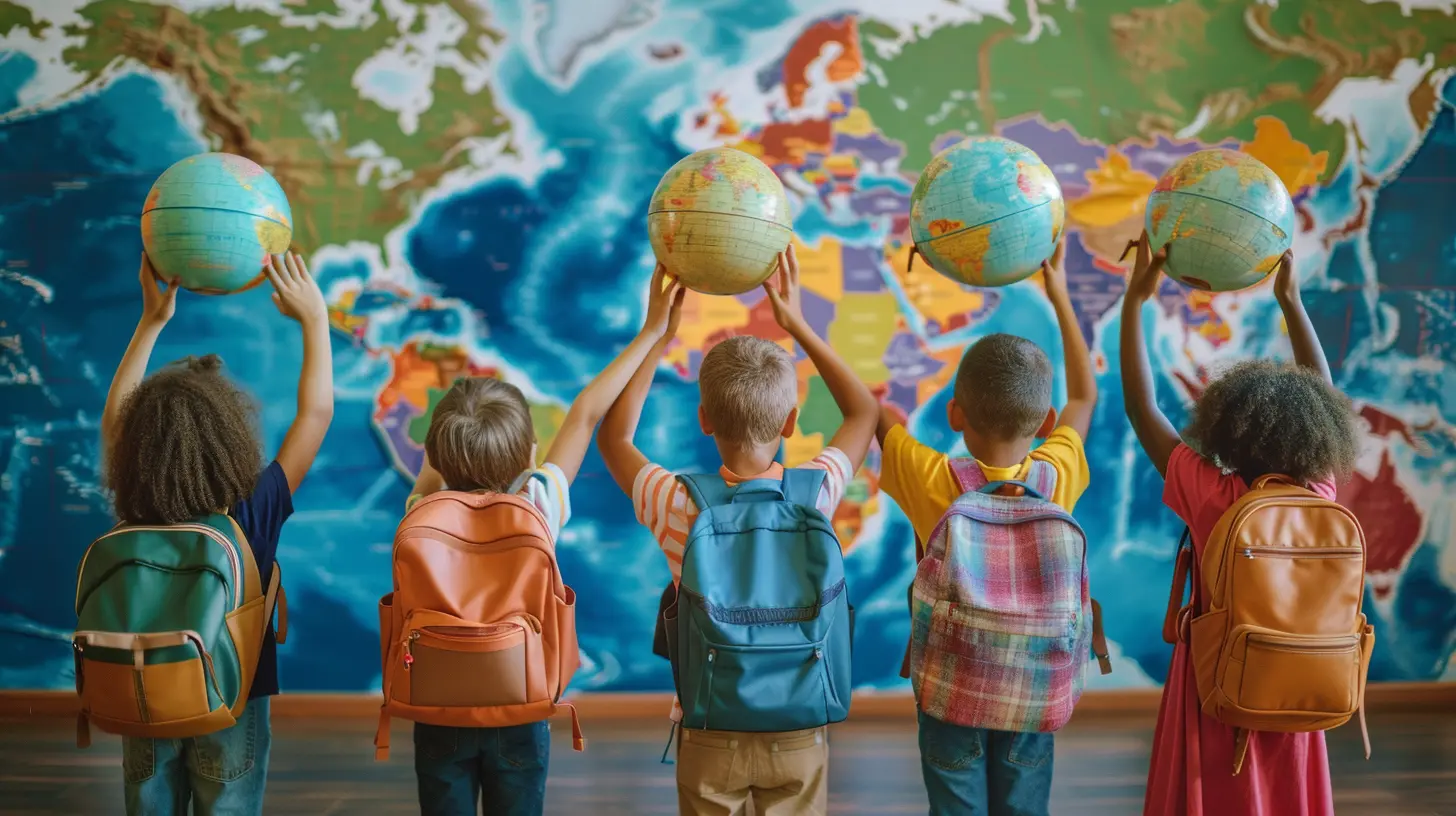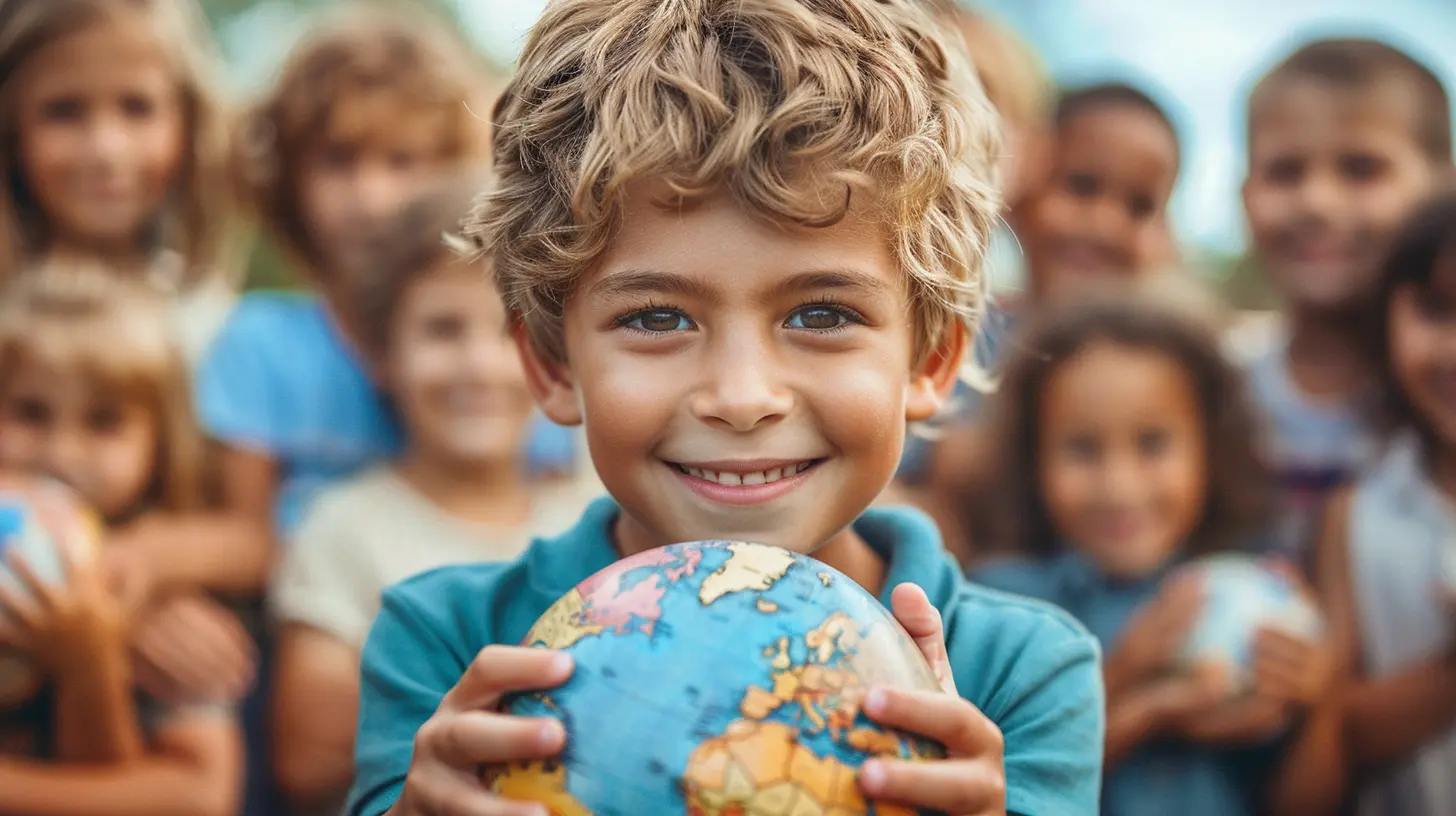Global Education Policy: Navigating Complexities in a Changing World
5 October 2025
Education isn’t just about classrooms, textbooks, or passing grades anymore—it's about future-proofing generations, connecting cultures, and shaping informed global citizens. As we watch the world evolve faster than ever before—thanks to technology, shifting economies, climate change, and more—it’s impossible to ignore how all of this affects education on a global scale.
Welcome to a thought-provoking journey where we unpack the messiness (and magic) of global education policy. Whether you’re an educator, student, policymaker, or just someone curious about how learning works worldwide, this one's for you.
What Is Global Education Policy, Anyway?
Let’s start at square one. Global education policy refers to the strategies, guidelines, and decisions made at the international level to shape how education systems operate. Think of it like the GPS for educational systems worldwide—it helps nations steer their curricula, funding, and goals in ways that (hopefully) benefit everyone involved.But here’s the kicker: there’s no “one-size-fits-all” here. Every country has unique cultures, challenges, and histories. So when we talk about "global policy," what we're really dealing with is a balancing act—one that tries to unify broad goals while honoring local needs.
Why Has It Become So Complicated?
Simple: the world changed.We’re more connected than ever before—hello, internet! But with connection comes complexity. A decision made in one part of the world can now impact schooling in another. Here are a few things adding layers to education policy today:
1. Technological Disruption
Remember when having a desktop computer was a big deal? Now, kids are coding before they hit high school. Technology is evolving at lightning speed, and education policies are constantly playing catch-up. From digital classrooms to AI tutors, today’s learners demand systems that are flexible, fast, and future-ready.2. Global Inequality
Let’s be honest—while some students attend schools equipped with smartboards and robotics clubs, others still learn under trees. The gap between rich and poor countries (or even regions within the same country) affects how policies get written. Bridging this divide isn’t just a goal, it’s a necessity.3. Migration and Refugee Crises
Millions of children are on the move—some fleeing conflict, others chasing opportunity. Global education policies must adapt to ensure these children aren’t left behind. That means creating inclusive classrooms, flexible curriculums, and language support systems that work across borders.4. Climate Change
Yes, even Mother Nature is part of the equation. Extreme weather disrupts schooling, especially in vulnerable communities. Education policies now have to address environmental literacy and resilience—because the next generation has some serious planet-saving to do.
The Big Players in Global Education
So, who’s calling the shots? There are several major organizations influencing education policies worldwide:✦ UNESCO
The United Nations Educational, Scientific and Cultural Organization leads the charge in promoting global education goals—like the Sustainable Development Goal 4 (SDG4), which aims to provide inclusive and equitable quality education for all by 2030.✦ OECD
The Organisation for Economic Co-operation and Development runs assessments like PISA to evaluate and compare education systems across countries. Their reports shape policy debates and priorities.✦ World Bank and Other Donors
Countries often rely on loans or aid to fund education reforms. But with money comes influence—donor nations and organizations often expect certain policy directions in return.
Common Goals, Different Roads
Even if countries agree on the need for better education, they often take very different paths to get there. Let’s look at a few universal aims and how different regions are approaching them:📘 Universal Access to Education
In some countries, this means building more schools. In others, it's about making existing schools safer and more accepting—for instance, reducing gender-based violence or supporting LGBTQ+ students.🧠 Curriculum Modernization
Some nations focus on STEM (Science, Tech, Engineering, Math), while others emphasize arts and humanities. The trick is to balance global market demands with national identity and culture.💻 Digital Inclusion
Access to the internet is now a need, not a luxury. But it’s not just about handing out laptops. Policies must also ensure teacher training, student engagement, and cybersecurity are part of the digital education plan.The Policy Tug-of-War: Local vs. Global Priorities
Here’s where things get tricky.Ever try coordinating a group project with teammates from different time zones, languages, and skill sets? That’s kind of what global education policy feels like.
Nations want to maintain control over what their children learn—fair enough. But they also need to align with global standards to remain competitive and collaborative. This tension can create friction, especially when powerful international actors push reform models that don’t fit local contexts.
For example, a test-heavy, performance-oriented curriculum might work in one country but fall flat in another where child-centered education is the norm.
The Role of Teachers in Policy Success
Let’s not forget the real MVPs in this equation—teachers.Global policies often look shiny on paper, but they're only as effective as the people delivering them in the classroom. Teachers need to be part of the conversation. Too often, policies are created top-down, without input from those on the front lines of education.
Investing in teacher training, well-being, and professional development isn’t optional—it’s foundational.
Challenges That Keep Policymakers Up at Night
No system is flawless, and global education policy is no exception. Here’s what continues to cause sleepless nights:🕳️ Policy Gaps
There are often huge disconnects between what’s written in policies and what actually happens on the ground. Implementation is a beast—and yes, it's just as messy as it sounds.🧩 Cultural Sensitivity
Policies that work in Sweden might fall apart in Sudan. Recognizing and respecting cultural differences is critical, not optional.💸 Funding Shortfalls
Plans need money—and lots of it. Without sustained funding, even the best intentions remain exactly that… just intentions.🚦Policy Fatigue
Too much change too fast can overwhelm educators and students alike. Policymakers need to pace reforms to avoid burnout and resistance.Where Do We Go From Here?
So, how do we move forward in this ever-shifting landscape?Here are a few game-changers that could make global education policy more relevant, inclusive, and effective:
🏫 Local Voices at the Global Table
Let communities—and especially teachers—take part in shaping policies. They know their students best.🌍 Blended Learning Models
Hybrid education isn’t just a COVID-19 trend. It's here to stay. Policies should support this mix of face-to-face and online learning for more flexible schooling.📊 Data-Driven (But People-Centered) Policy
Tech can provide insights, but don’t forget the human side. We need data to guide decisions, not dominate them.🕊️ Focus on Emotional and Global Competence
Alongside math and reading, let’s teach empathy, critical thinking, and global citizenship. After all, we’re educating not just workers—but whole humans.Final Thoughts
Navigating global education policy is like steering a massive ship through stormy seas. There are waves of change, unexpected obstacles, and shifting winds. But at the heart of it all are students—millions of them—whose lives can be transformed by the choices we make today.We owe it to them to keep asking hard questions, pushing for better solutions, and designing policies that are as dynamic as the world they’re growing up in.
The road ahead won’t be easy—but hey, when has anything worth doing ever been?
all images in this post were generated using AI tools
Category:
Global EducationAuthor:

Eva Barker
Discussion
rate this article
1 comments
Kendall Ortiz
Thank you for shedding light on such an important topic. Navigating global education policy is challenging, but your insights offer hope for a brighter future for all learners.
October 19, 2025 at 4:22 AM

Eva Barker
Thank you for your thoughtful comment! I'm glad you found the insights valuable in addressing the complexities of global education policy.


